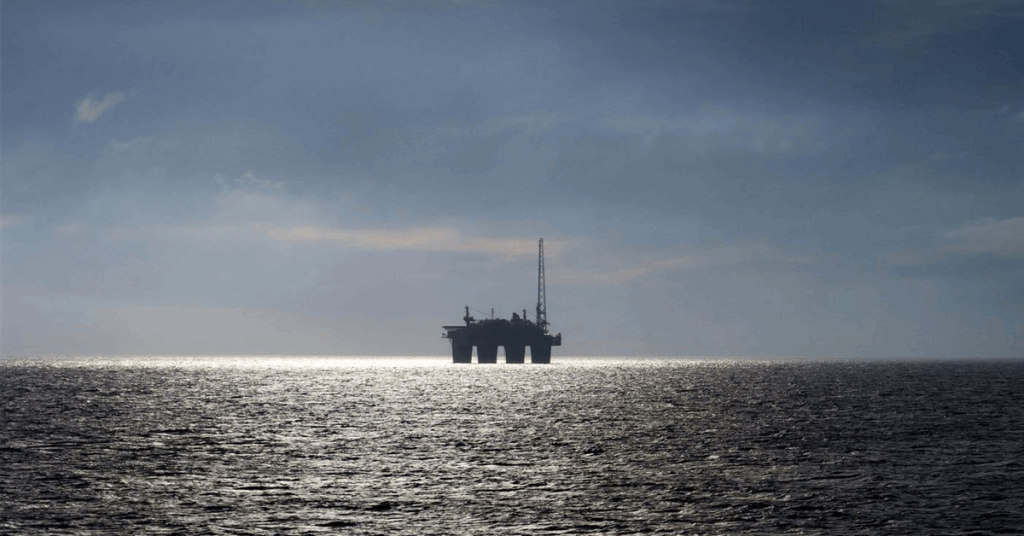Var Energi ASA said Tuesday it had completed a project to enable low-pressure production in Gjoa on Norway’s side of the North Sea, increasing the field’s output to 41,000 barrels of oil equivalent a day (boed).
Production grew 6,000 boed, while remaining recoverable volumes rose 6.3 million boe or about 25 percent, the Norwegian continental shelf explorer and producer said in a press release.
The low pressure project, part of a planned maintenance shutdown, adds two to three years to Gjoa’s economic production life with a payback of less than six months, Var Energi said.
“The project has modified the compressor systems on the Gjoa platform, which has enabled the wells to produce longer and at higher rates, increasing the remaining recoverable volumes”, it said.
Chief operating officer Torger Rod said, “By using off-the-shelf technology, we are not only boosting production and remaining recoverable volumes from the Gjoa field. We are also prolonging the economic lifetime of the other producing fields Duva, Vega and Nova that are tied into the Gjoa platform. This is a win-win situation for the producing fields and the development projects in the Greater Gjoa area”.
Aker Solutions performed the concept select studies, while Rosenberg Worley executed the project, according to Var Energi.
Gjoa is part of Production License 153, where Var Energi is operator with a 30 percent stake. Norway’s state-owned Petoro AS holds 30 percent. Edinburgh-based Harbour Energy PLC owns 28 percent. OKEA ASA has 12 percent.
Var Energi reported August 26 it had reached a production of 400,000 boed, ahead of schedule, and said it is on track to produce around 430,000 in the fourth quarter – mainly thanks to the new Balder field floating production, storage and offloading vessel (FPSO).
Last month 10 Var Energi said FPSO Jotun of the North Sea field reached its capacity of over 80,000 boed. Jotun ramped up to capacity earlier than expected, after starting production June, according to Var Energi.
“All 14 subsea production wells are now online and are on average producing in line with expectations, and work is ongoing to further optimize the production from Jotun FSPO”, Var Energi said in a statement September 10.
“The Balder Phase V and VI projects are underway and will add additional capacity, maintaining high production from the Balder area going forward”.
Jotun adds to “current production of around 30,000 boed gross combined from the Balder floating production unit and Ringhorne facilities”, Var Energi said.
The wider Balder hub, which includes the Breidablikk and Grane fields, accounted for 20 percent of Var Energi’s 2024 output and 276 million boe of proven and probable reserves at the end of the year, the company says on its website.
“The rapid ramp-up to peak production at the Jotun FPSO, alongside strong performance across our portfolio, puts us on track to meet our production target of around 430,000 boed in the fourth quarter of this year”, chief executive Nick Walker said in the statement.
“With the new facilities in the Balder area designed to extend production beyond 2045 we are on track to create more value from the area”.
Var Energi, primarily owned by Italy’s state-controlled Eni SpA, has a 90 percent operating stake in Balder. Kistos Holdings PLC owns 10 percent.
To contact the author, email jov.onsat@rigzone.com
Generated by readers, the comments included herein do not reflect the views and opinions of Rigzone. All comments are subject to editorial review. Off-topic, inappropriate or insulting comments will be removed.
element
var scriptTag = document.createElement(‘script’);
scriptTag.src = url;
scriptTag.async = true;
scriptTag.onload = implementationCode;
scriptTag.onreadystatechange = implementationCode;
location.appendChild(scriptTag);
};
var div = document.getElementById(‘rigzonelogo’);
div.innerHTML += ” +
‘‘ +
”;
var initJobSearch = function () {
//console.log(“call back”);
}
var addMetaPixel = function () {
if (-1 > -1 || -1 > -1) {
/*Meta Pixel Code*/
!function(f,b,e,v,n,t,s)
{if(f.fbq)return;n=f.fbq=function(){n.callMethod?
n.callMethod.apply(n,arguments):n.queue.push(arguments)};
if(!f._fbq)f._fbq=n;n.push=n;n.loaded=!0;n.version=’2.0′;
n.queue=[];t=b.createElement(e);t.async=!0;
t.src=v;s=b.getElementsByTagName(e)[0];
s.parentNode.insertBefore(t,s)}(window, document,’script’,
‘https://connect.facebook.net/en_US/fbevents.js’);
fbq(‘init’, ‘1517407191885185’);
fbq(‘track’, ‘PageView’);
/*End Meta Pixel Code*/
} else if (0 > -1 && 68 > -1)
{
/*Meta Pixel Code*/
!function(f,b,e,v,n,t,s)
{if(f.fbq)return;n=f.fbq=function(){n.callMethod?
n.callMethod.apply(n,arguments):n.queue.push(arguments)};
if(!f._fbq)f._fbq=n;n.push=n;n.loaded=!0;n.version=’2.0′;
n.queue=[];t=b.createElement(e);t.async=!0;
t.src=v;s=b.getElementsByTagName(e)[0];
s.parentNode.insertBefore(t,s)}(window, document,’script’,
‘https://connect.facebook.net/en_US/fbevents.js’);
fbq(‘init’, ‘1517407191885185’);
fbq(‘track’, ‘PageView’);
/*End Meta Pixel Code*/
}
}
// function gtmFunctionForLayout()
// {
//loadJS(“https://www.googletagmanager.com/gtag/js?id=G-K6ZDLWV6VX”, initJobSearch, document.body);
//}
// window.onload = (e => {
// setTimeout(
// function () {
// document.addEventListener(“DOMContentLoaded”, function () {
// // Select all anchor elements with class ‘ui-tabs-anchor’
// const anchors = document.querySelectorAll(‘a .ui-tabs-anchor’);
// // Loop through each anchor and remove the role attribute if it is set to “presentation”
// anchors.forEach(anchor => {
// if (anchor.getAttribute(‘role’) === ‘presentation’) {
// anchor.removeAttribute(‘role’);
// }
// });
// });
// }
// , 200);
//});

